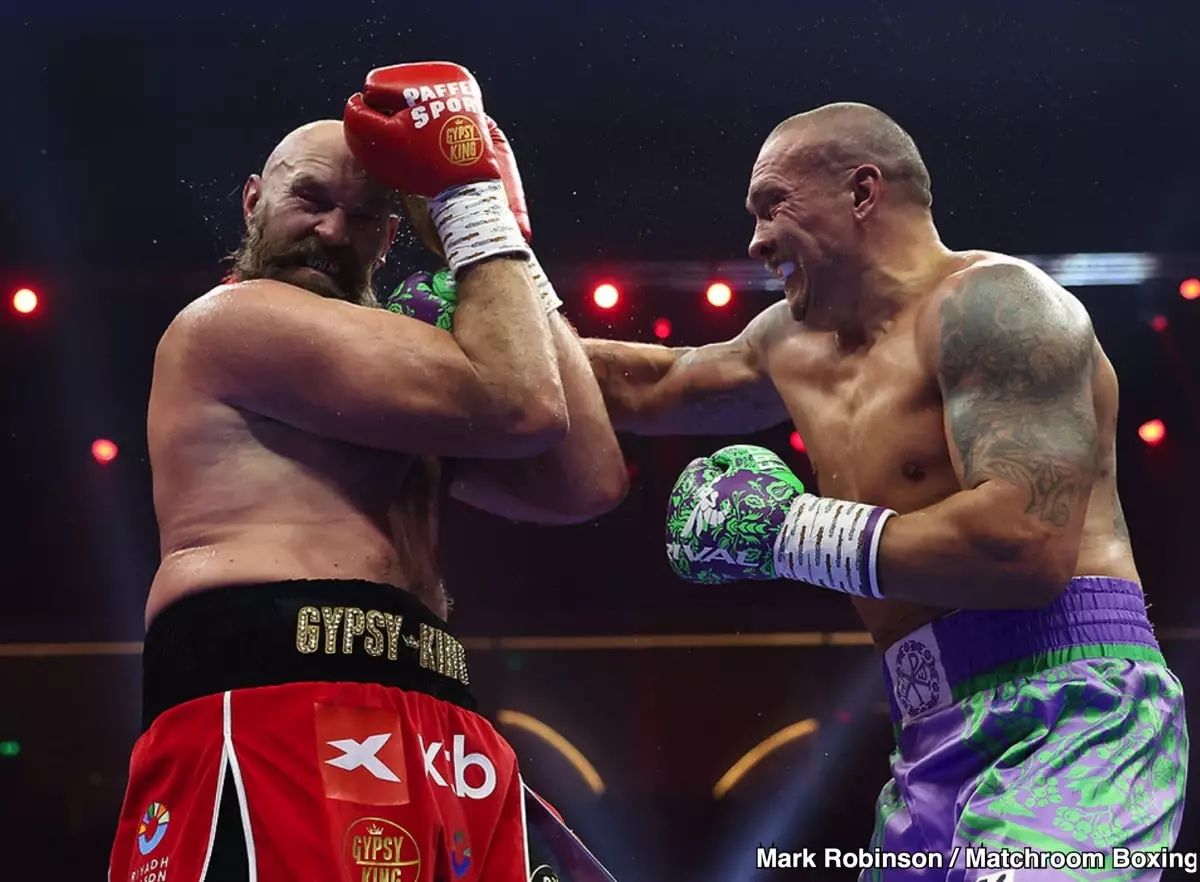In the wake of Tyson Fury’s recent showdown with Oleksandr Usyk, boxing enthusiasts and analysts alike were quick to dissect the fight’s implications, tactical decisions, and overall performance by both fighters. The bout marked an important chapter in heavyweight boxing and raised questions about Fury’s preparation, strategy, and endurance in the later stages of the fight.
The Weight of Expectations and Physical Condition
Tyson Fury entered the ring weighing a substantial 281 lbs, an increase of 19 lbs from his previous fight. This added weight proved to be a double-edged sword. Commentator Paulie Malignaggi highlighted that Fury appeared fatigued as the fight progressed. When you are a heavyweight, the balance between power and agility is crucial, and that extra weight could have hampered Fury’s speed and stamina. The sixth round onwards was critical; people noted a visible drop in his efficiency, particularly in the 11th and 12th rounds where he seemed more focused on clinching than engaging in decisive exchanges. This shift in strategy — moving from aggression to holding — has raised many eyebrows, suggesting that Fury might have underestimated Usyk’s ability to maintain the pace.
Oleksandr Usyk, a former undisputed cruiserweight champion, moved effortlessly in the ring and employed tactics that fully utilized his agility and ring IQ. Unlike Fury’s previous opponents, Usyk was not a stationary target, presenting him with angles and feints that disrupted Fury’s rhythm. Malignaggi astutely articulated that Usyk’s continuous movement forced Fury to alter his approach. Though Fury possesses a clear size advantage, this advantage was neutralized by Usyk’s footwork and strategic prowess, effectively keeping Fury from leveraging his reach and power to its fullest impact.
In the ring, Usyk’s ability to shift and control the pace of the fight was pivotal. Surrounding Fury with angles and body feints, he minimized the effectiveness of Fury’s jabs and hooks. This tactical superiority enabled Usyk to dictate the flow of the fight, leaving Fury scrambling to regain control rather than capitalizing on his physical advantages.
As the fight reached its culmination, the importance of the final rounds became increasingly evident. Regardless of how competitive the bout was up until the 10th round, it was the 11th and 12th rounds that sealed Fury’s fate. Malignaggi notes that Fury’s reluctance to actively engage during these critical moments possibly cost him the match. While one could argue that Fury showcased glimpses of his famous boxing acumen with some effective punches, they paled in comparison to Usyk’s sustained offensive output and strategic superiority.
The unanimous decision victory for Usyk, with scores of 116-112 from all three judges, reflects the culmination of both fighters’ efforts throughout the bout. Fury’s strategy of holding on and trying to ride out the final minutes was a clear sign of a fighter pushed into survival mode, a tactical misstep considering the ongoing competitiveness of the fight.
With this loss, Fury’s pathway to a trilogy fight with Usyk or a highly anticipated matchup against Anthony Joshua has shifted. Many now question the viability of Fury’s title aspirations following a performance that, while demonstrating his undeniable talent, ultimately lacked the assertiveness and conditioning needed in the heavyweight division’s high-stakes environment.
Usyk’s victory has not only solidified his status as the unified heavyweight champion but also hinted at a broader shift in the heavyweight landscape. The rigorous demands of the sport are undeniably taxing, and Fury’s experience reinforces the notion that even elite athletes must continually adapt. As Usyk secured his place atop the division, the boxing community eagerly anticipates how Fury will respond to this defeat and what adjustments he will make in pursuit of his next chapter.
Ultimately, this fight serves as a reminder that in boxing, enduring physicality is vital, but strategic execution and adaptability are what truly define a champion. The question remains: will Tyson Fury rise to the occasion, or has this setback diminished his standing in the heavyweight hierarchy? The coming months will reveal the answers.

